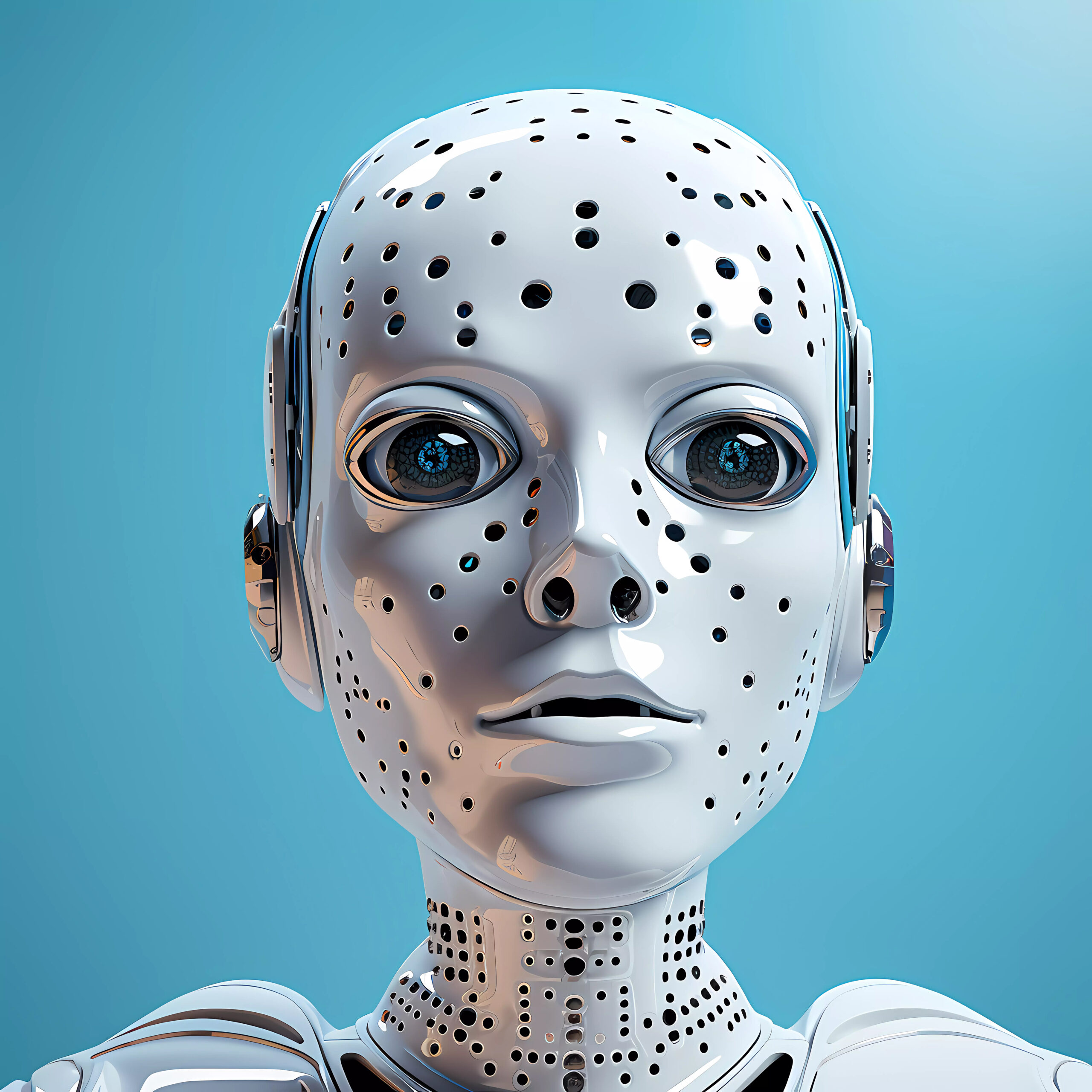Is This the Smartest AI Chat Yet? A Deep Dive Analysis
In the rapidly evolving landscape of artificial intelligence, the quest for the smartest AI chat has become a focal point of technological advancement and public fascination.
As we delve into the intricacies of cutting-edge language models and conversational AI, we find ourselves asking: have we finally achieved the pinnacle of machine intelligence in dialogue?
This article aims to explore the latest developments in AI chatbots, analyzing their capabilities, limitations, and potential impact on various sectors.
We’ll examine the criteria that define the smartest AI chat and evaluate current contenders for this title.
By the end of this deep dive, readers will have a comprehensive understanding of where AI chat technology stands today and what the future may hold.
From customer service to creative writing, the applications of advanced AI chat systems are vast and growing.
Let’s embark on this journey to uncover whether we’ve truly created the smartest AI chat yet.
We strongly recommend that you check out our guide on how to take advantage of AI in today’s passive income economy.
Table of Contents
The Evolution of AI Chatbots: From ELIZA to Modern Marvels
To appreciate the current state of AI chat technology, it’s essential to understand its historical context and evolution.
The journey began in the 1960s with ELIZA, a simple pattern-matching program that could engage in basic conversation.
While groundbreaking for its time, ELIZA was far from what we would consider the smartest AI chat today.
As computing power increased and natural language processing techniques advanced, chatbots became increasingly sophisticated.
The 1990s and early 2000s saw the rise of rule-based systems and knowledge databases, allowing for more coherent and informative conversations.
However, these systems still lacked true understanding and were limited by their pre-programmed responses.
The real breakthrough came with the advent of machine learning and neural networks, paving the way for today’s advanced AI chatbots.
Milestones in AI Chat Development
The path to creating the smartest AI chat has been marked by several significant milestones and innovations.
In 2011, IBM’s Watson showcased the potential of AI in natural language processing by winning the quiz show Jeopardy!
This victory demonstrated that AI could understand and respond to complex questions with human-like accuracy.
The introduction of deep learning techniques in the 2010s further accelerated progress in AI chat technology.
Models like GPT (Generative Pre-trained Transformer) and BERT (Bidirectional Encoder Representations from Transformers) set new benchmarks in language understanding and generation.
These advancements laid the groundwork for more recent developments in conversational AI, bringing us closer to what might be considered the smartest AI chat.
As we entered the 2020s, the release of GPT-3 and subsequent large language models marked a new era in AI capabilities.
These models demonstrated unprecedented fluency and versatility in natural language tasks, sparking debates about AI consciousness and ethics.
Defining the Smartest AI Chat: Key Criteria and Capabilities
When we talk about the smartest AI chat, we need to establish clear criteria for evaluation.
Intelligence in AI is multifaceted, encompassing various abilities that contribute to effective communication and problem-solving.
One crucial aspect is natural language understanding – the ability to accurately interpret human input, including context, nuance, and intent.
The smartest AI chat should be able to grasp complex queries and respond appropriately, even when faced with ambiguous or poorly worded questions.
Another key factor is the quality and coherence of the AI’s responses.
The smartest AI chat should generate human-like text that is not only grammatically correct but also contextually relevant and logically sound.
Advanced Features of the Smartest AI Chat
Beyond basic conversation, the smartest AI chat should possess a range of advanced capabilities.
One such feature is multimodal interaction – the ability to understand and generate not just text, but also images, audio, and potentially other forms of data.
This versatility allows for more natural and comprehensive communication.
Another critical aspect is continuous learning and adaptation.
While current AI models are typically static after training, the ideal smartest AI chat would be able to learn from interactions and improve over time.
Emotional intelligence is also becoming increasingly important in AI chat systems.
The ability to recognize and respond appropriately to human emotions can greatly enhance the quality of interactions.
Lastly, the smartest AI chat should exhibit strong reasoning and problem-solving skills, capable of breaking down complex issues and providing insightful solutions.
Ethical Considerations in AI Chat Development
As we push the boundaries of AI chat technology, ethical considerations become increasingly important.
The smartest AI chat should not only be intelligent but also responsible and aligned with human values.
This includes maintaining user privacy, avoiding biased or harmful outputs, and being transparent about its limitations as an AI system.
Developers must also consider the potential societal impacts of highly advanced AI chat systems, such as their effect on employment or human relationships.
Ensuring that the smartest AI chat contributes positively to society while minimizing potential risks is a crucial challenge.
As we evaluate contenders for the title of smartest AI chat, these ethical aspects should be given significant weight alongside technical capabilities.
The goal should be to create AI chat systems that are not just smart, but also trustworthy and beneficial to humanity.
Current Contenders for the Smartest AI Chat Title
As we explore the landscape of AI chat technology, several systems stand out as potential candidates for the title of smartest AI chat.
These contenders represent the cutting edge of what’s currently possible in conversational AI.
One prominent example is GPT-4, the latest iteration of OpenAI’s language model, which has demonstrated remarkable capabilities across a wide range of tasks.
Another strong contender is Google’s LaMDA (Language Model for Dialogue Applications), which has shown impressive conversational abilities and contextual understanding.
Anthropic’s Claude, with its focus on safety and ethical AI, is also a noteworthy player in the race for the smartest AI chat.
Comparative Analysis of Leading AI Chat Systems
To determine which system might truly be the smartest AI chat, we need to compare their performance across various metrics.
One key area of comparison is the breadth and depth of knowledge – how well each system can handle questions across diverse domains.
Another important factor is the ability to maintain context over long conversations, a challenge that many AI chat systems struggle with.
We should also consider the creativity and originality of responses, as the smartest AI chat should be able to generate novel ideas and solutions.
The speed and efficiency of these systems are also relevant, particularly for real-time applications.
Lastly, we must evaluate their robustness – how well they handle unexpected inputs or adversarial prompts.
Real-World Applications and Performance
The true test of the smartest AI chat lies in its real-world applications and performance.
Many of these systems are already being deployed in customer service, where they handle a high volume of inquiries across various industries.
In education, AI chat systems are being used as tutors and learning assistants, adapting to individual students’ needs.
The healthcare sector is exploring the use of AI chat for patient triage and medical information dissemination.
Creative industries are also leveraging these technologies for content generation and ideation.
By examining how these AI chat systems perform in diverse real-world scenarios, we can better assess which might be the smartest AI chat overall.
The Future of AI Chat: Predictions and Possibilities
As we consider the current state of AI chat technology, it’s natural to wonder about its future trajectory.
The rapid pace of advancement suggests that what we consider the smartest AI chat today may be surpassed in the near future.
One area of potential growth is in multimodal AI systems that can seamlessly integrate text, voice, and visual information.
We may also see significant improvements in long-term memory and reasoning capabilities, allowing for more coherent and context-aware conversations.
The development of AI chat systems with stronger common sense understanding and causal reasoning is another exciting possibility.
These advancements could lead to AI chats that are not just smart, but truly intelligent in a more human-like way.
Challenges and Limitations in AI Chat Development
Despite the impressive progress, there are still significant challenges in creating the ultimate smartest AI chat.
One persistent issue is the problem of hallucination – when AI systems generate plausible but factually incorrect information.
Overcoming this challenge will be crucial for developing truly reliable and trustworthy AI chat systems.
Another limitation is the current inability of AI chats to form genuine long-term memories or develop true understanding.
While they can process and generate human-like text, they lack consciousness and self-awareness.
Addressing these fundamental limitations may require breakthroughs in cognitive science and AI architecture.
There are also ongoing concerns about the energy consumption and environmental impact of training and running large AI models.
The Role of Human-AI Collaboration
As we strive to create the smartest AI chat, it’s important to consider the role of human-AI collaboration.
Rather than aiming for AI systems that completely replace human intelligence, we may see the emergence of hybrid systems.
These could combine the strengths of AI, such as vast knowledge and rapid processing, with human qualities like empathy and intuition.
Such collaborative approaches could lead to AI chat systems that are not just smart, but also more aligned with human values and needs.
This synergy between human and artificial intelligence might ultimately redefine what we consider to be the smartest AI chat.
As we move forward, fostering this collaboration while addressing ethical concerns will be crucial for the responsible development of AI chat technology.
Conclusion: Assessing the State of the Smartest AI Chat
As we conclude our deep dive analysis, it’s clear that the quest for the smartest AI chat is an ongoing journey.
The current landscape is populated with impressive contenders, each pushing the boundaries of what’s possible in conversational AI.
While we may not have achieved the ultimate smartest AI chat yet, the rapid pace of progress is undeniable.
Today’s leading AI chat systems demonstrate remarkable capabilities in language understanding, knowledge application, and even creative expression.
However, they also have limitations and ethical considerations that cannot be overlooked.
The smartest AI chat of the future will need to balance advanced capabilities with responsible development and deployment.
As we look ahead, the potential applications and impacts of increasingly intelligent AI chat systems are both exciting and challenging.
The Ongoing Quest for Smarter AI
The pursuit of the smartest AI chat is more than just a technological challenge – it’s a quest to understand and replicate human-like intelligence.
As we continue to refine and improve AI chat systems, we’re not just creating tools, but exploring the nature of cognition and communication.
This journey involves not only computer scientists and AI researchers, but also linguists, psychologists, and philosophers.
The smartest AI chat of tomorrow may incorporate insights from diverse fields, leading to more holistic and capable systems.
As users and potential beneficiaries of this technology, we all have a stake in its development.
Engaging in informed discussions about the capabilities, limitations, and implications of AI chat systems is crucial.
By doing so, we can help shape the future of this technology in a way that maximizes its benefits while mitigating potential risks.
In the end, the quest for the smartest AI chat is a reflection of our own quest to understand and augment human intelligence.
Frequently Asked Questions (FAQ)
What is the most advanced chat AI?
The field of AI is rapidly evolving, making it challenging to definitively state which chat AI is the most advanced.
As of 2024, some of the most advanced chat AI systems include GPT-4, Google’s LaMDA, and Anthropic’s Claude.
These models showcase impressive natural language understanding and generation capabilities.
However, “most advanced” can be subjective and depend on specific criteria or use cases.
Different AI chat systems may excel in different areas, such as knowledge breadth, reasoning, or task completion.
It’s important to note that companies are continually developing and improving their AI models.
The landscape of advanced chat AI is likely to change as new breakthroughs and technologies emerge.
Which AI is best for chatting?
The best AI for chatting depends on your specific needs and preferences.
Some popular options include ChatGPT, Google’s Bard, and Microsoft’s Bing Chat.
Each of these has its strengths: ChatGPT is known for its versatility and creative outputs.
Google’s Bard excels in providing up-to-date information and answering queries.
Bing Chat integrates well with web search and can provide visual responses.
For more specialized conversations, there are domain-specific chatbots in areas like customer service or healthcare.
Consider factors like ease of use, availability, and privacy policies when choosing an AI for chatting.
It’s also worth trying out different options to see which one best suits your conversation style and needs.
Which AI chat is the smartest?
Determining the “smartest” AI chat is complex, as intelligence in AI systems is multifaceted.
Current leading contenders for the smartest AI chat include GPT-4, LaMDA, and Claude.
These systems demonstrate advanced language understanding, knowledge application, and reasoning abilities.
However, “smartest” can mean different things: breadth of knowledge, problem-solving skills, or creative thinking.
Each AI chat system may excel in different aspects of intelligence.
It’s also important to note that AI “intelligence” is fundamentally different from human intelligence.
The smartest AI chat may vary depending on the specific task or domain of knowledge being evaluated.
What is the most realistic chat AI?
Realism in chat AI can be interpreted in various ways, including human-like responses and conversational flow.
Some of the most realistic chat AIs include GPT-4, LaMDA, and Anthropic’s Claude.
These systems can engage in natural-sounding conversations and provide contextually appropriate responses.
Realism also involves the ability to understand and respond to nuanced queries and maintain context.
Advanced AI chats can often pass the Turing test in short interactions, seeming indistinguishable from humans.
However, over longer conversations, even the most realistic AI chats may reveal their non-human nature.
It’s crucial to remember that no matter how realistic, these are AI systems, not conscious entities.

We strongly recommend that you check out our guide on how to take advantage of AI in today’s passive income economy.




